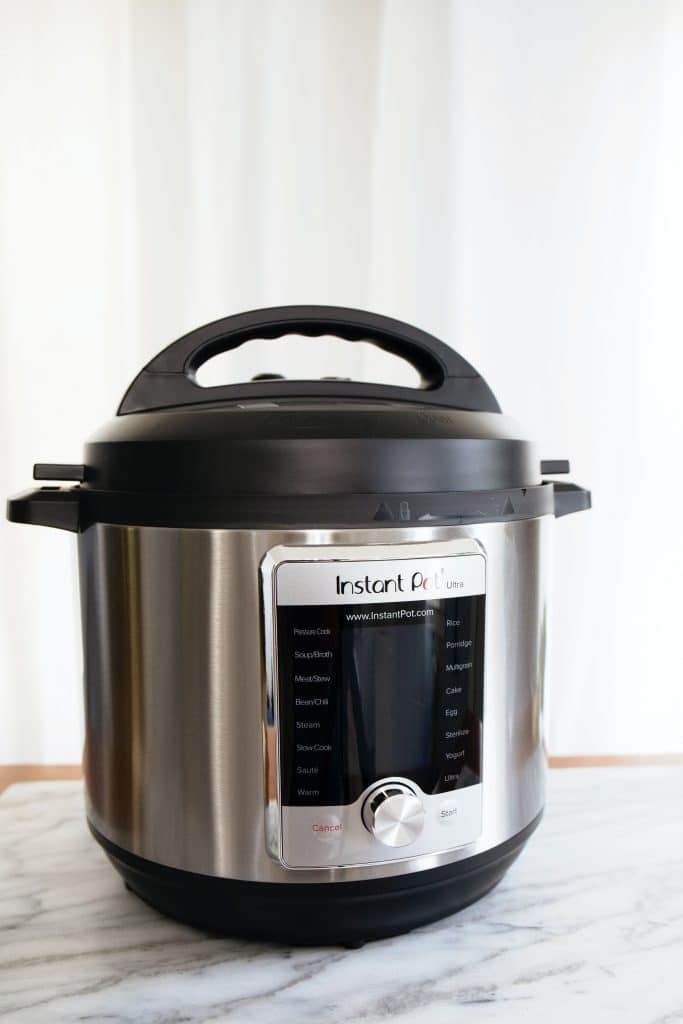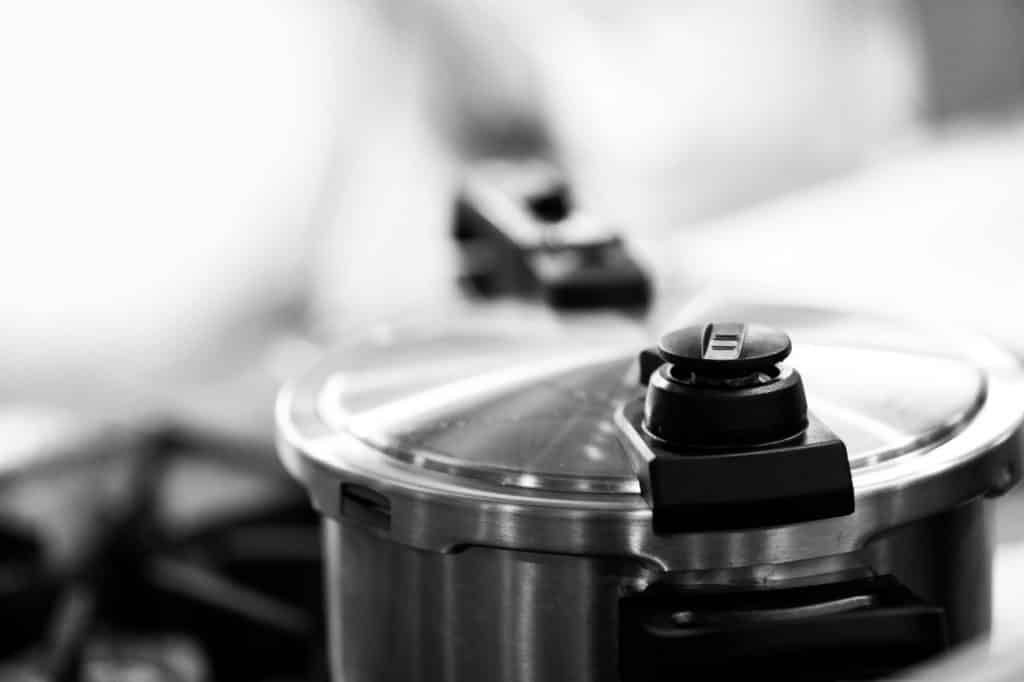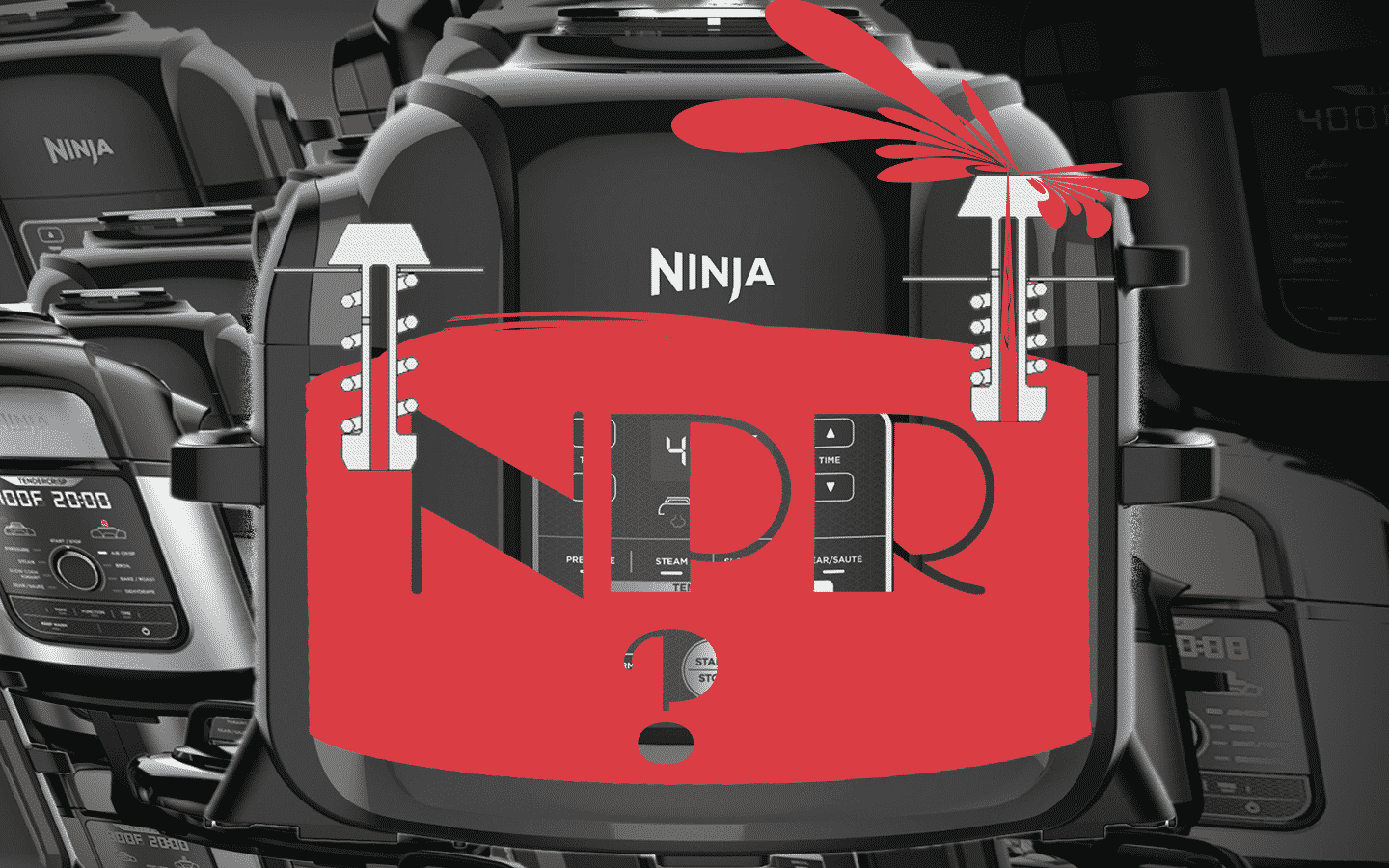When I first got my Ninja Foodi, I kept reading about NPR but was unsure what people were talking about when they mentioned this. After using my Ninja Foodi for a few months and a little research, I knew what it was.
Answer: NPR is Natural Pressure Release and is used to slowly release the pressure from the food you have just cooked. NPR is beneficial for foamy or frothy foods such as rice and beans. It is also useful when making things such as pudding or starchy foods. Natural is the same as Normal and Automatic.
How to Natural Pressure Release
It is effortless to get NPR working in your favor. Let the pot sit. As the Ninja Foodi rests, it will cool and slowly release the pressure on the seals. So all you need to do is wait.
Many people ask, “how long should I wait?” And like many things, this depends. If there is more water or food mass inside the pot, it will hold the heat and keep the seal longer. So you will need to wait longer. Later I will do a full breakdown of NPR and testing to compare the cooking with QPR and NPR. When I do so, I will produce charts that will help you determine how long you should have to wait based on what you are cooking.
You will know NPR is finished when you can lightly twist the lid with your hand, and it moves without much resistance. However, if there is resistance, the NPR is likely not finished, and you should wait a little longer. If you are worried about the steam giving your arm a burn (or a little surprise), you can jiggle the pressure release valve using a wooden spoon to see if there is still steam pressure. Remember, you only want to check for pressure, so you should not lock it into position, only jiggle it.
If no steam escapes, the NPR process is likely done, and you should apply a light twist on the lid. Again if it spins easily and steam or liquid is not shooting out of the cooker, the NPR is done, and you can open the Ninja Foodi.

When Should I NPR
Many foods, such as starchy foods, foods with rising agents (leavening agents), and waxy foods, can cause foaming, frothing, and sputtering from the pressure release valve and are better for NPR.
The following list is all the foods you should use natural pressure release when pressure cooking. But before listing them here, I checked for existing recipes that people have made for each food and only listed those that people have made in their Ninja Foodi:
- Applesauce – I was surprised by this one and am looking forward to trying it out, but apples will froth and sputter when using Quick Pressure Release; therefore, you should use NPR and calculate that in your cook time.
- Cranberry and cranberry sauce – The recipes I found look delicious, but this one can definitely gum up the works, and you should use NPR and be ready to clean your pressure lid.
- Pearl barley – I found several great-looking soup recipes and beef barley recipes. Pearl Barley has the hull and most of the bran layer removed. This food is easy to chew, but the starch seems to cause foaminess and leads us to use NPR again.
- Porridge – I found so many recipes for different types of porridge, which just look like they would cause all kinds of sputtering if you didn’t use NPR.
- Oatmeal – Like porridge, I found several recipes, and this one also looks like an NPR must.
- Split peas – So many great-looking split pea soup recipes, and this one should be somewhat starchy so that it would be a must for NPR.
- Pasta and noodles – This one is one you will have to play it by ear. I have found several recipes for noodles that use quick pressure release and others that use natural pressure release. And I have cooked it both ways. You will have a mess to clean up when things go wrong on the QPR.
- Rice – I have cooked rice weekly or more often in my Ninja Foodi and other pressure cookers over the last three years. If you wash your rice thoroughly, QPR is possible, but by using NPR, you will never have the mess or fuss that rice can cause, so I think you should almost always use NPR when cooking rice.

Is NPR the Same as Manual, Normal, Regular, or Automatic
When looking online, there is a lot of confusing information about NPR and QPR, but I’ll try to clarify some things here. NPR or natural pressure release is not the same as QPR (quick pressure release click to read our article opens in new tab ) or MR (manual or manual release).
) or MR (manual or manual release).
However, NPR, meaning or Natural Pressure Release, can also be called Normal Pressure Release, or NR, NPR, when exchanging the word natural for normal. The same convention goes for automatic.
So as you are out there reading and trying to cook recipes, think of it like this: If I leave the pressure cooker to do a natural or normal thing, it will automatically release the pressure over time.
This should help you remember the correct recipe method when it calls for something you don’t recognize.

What Does NPR do for Cook Time?
Something people often fail to realize is that NPR is going to add to your cook time. As mentioned before, I will do a whole post on this with some experimentation and provide the results in a future post, but you can count on that NPR will add 10-20 minutes of cook time to your meal.
Due to this, it is essential when making or modifying recipes to consider if you use NPR; your meat or vegetables might cook longer than you originally intended. To avoid overcooking, you can try to find a similar recipe to the one you are cooking and see what has worked for people in the past.
NPR is also interesting because while it adds to the cooking time, it gives your food a chance to rest while cooking. For instance, when you pressure cook a chicken or steak, you typically will only set the pressure time to 2-4 min, but then do an NPR for the pressure. This means the steak or chicken is cooking for 12-25 min, depending on the size. This is one of the reasons it is imperative to cook with a thermometer and test things out to get your own Foodie Results (sorry, I couldn’t resist).
I hope that was helpful. If I missed anything, let me know by using the contact form or messaging us on Facebook. Don’t forget to check out our YouTube as we learn about new kitchen gadgets and get our own Foodie Results 😉
I’ve been cooking using my Ninja Foodi for several years and pressure cookers in general since early 2017. I had to learn a lot to get here!



